How Many Types Of Hyenas Live In The World Today?
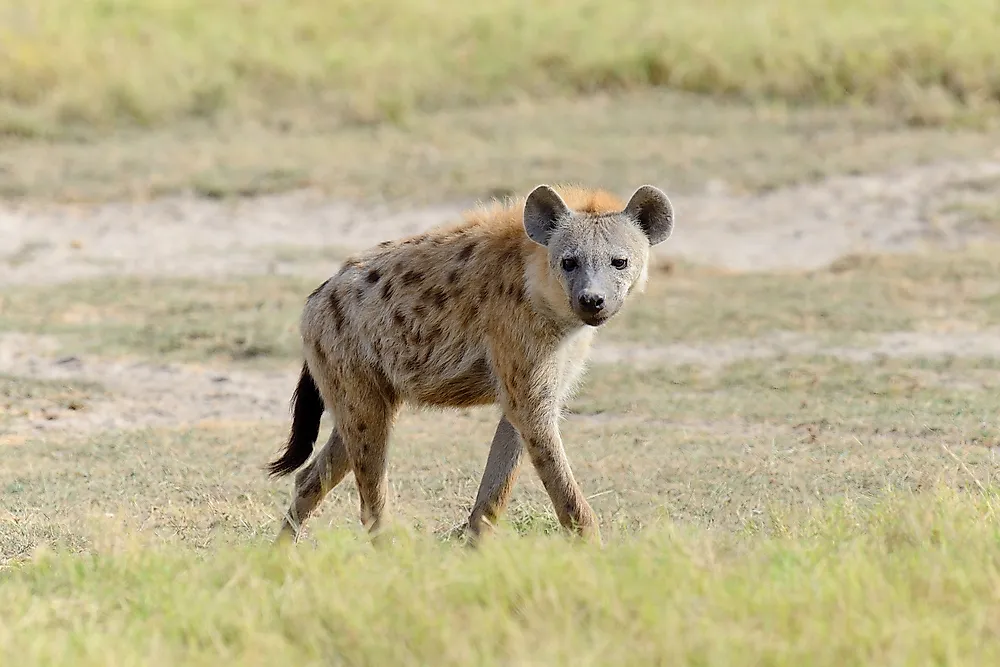
- The brown hyena, also known as the strandwolf, is the rarest of the hyenas.
- The spotted hyena is the most widespread of the hyenas and is classified as a species of Least Concern.
- The striped hyena is native to East and North Africa, the Indian subcontinent, Central Asia, the Caucasus, and the Middle East.
The hyena is a carnivorous mammal of the Hyaenidae family. The family is the fifth smallest of the carnivorous mammals and one of the smallest mammals. Hyenas are a vital but unique component of the African ecosystem. Although they are nocturnal animals, they are known to hunt in the early morning hours. Hyenas are social animals that live in large groups with a well-defined hierarchy of leadership. They evolved in Eurasia and diversified into the bone-crushing and the lightly built dog-like hyenas. The dog-like hyenas spread and arrived across North America before a change in climate wiped them into extinction. The aardwolf is the only surviving dog-like hyena. The bone-crushing hyenas which are the spotted, brown, and striped hyenas rose to become the undisputed scavengers of Africa and Eurasia. These animals are prominently featured in mythology and folklore where they are viewed as worthy of contempt. In some communities especially in Africa, they are thought to a sign of bad omen and are killed as soon as they appear. The following are the surviving species of hyenas.
4. Aardwolf (Proteles cristata)
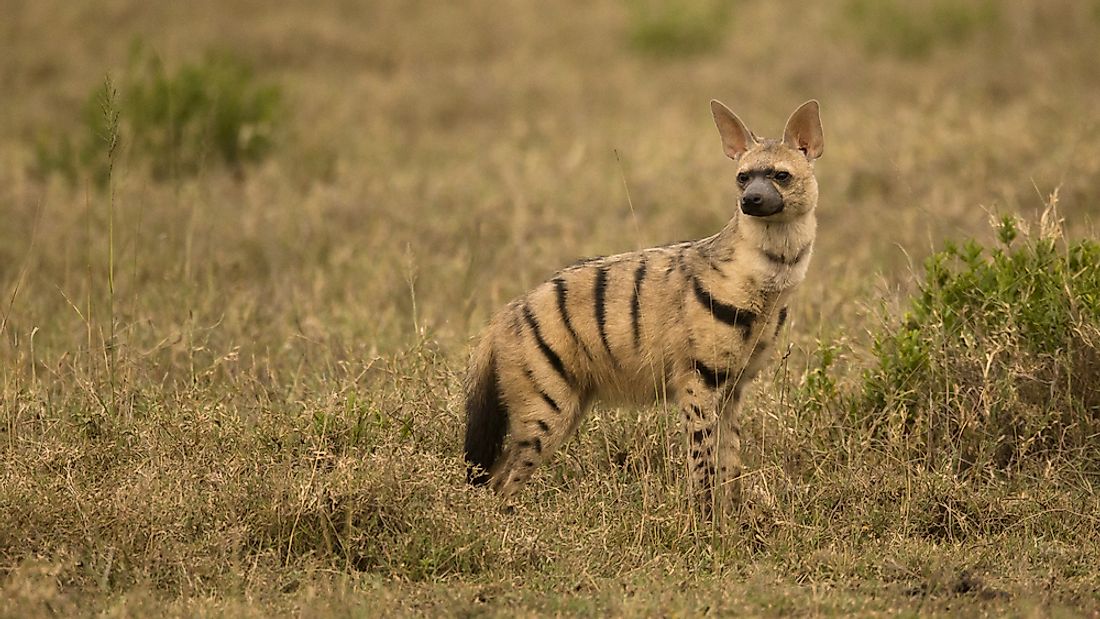
The aardwolf is the sole species of the dog-like hyenas after the rest were wiped out in North America by climate change. It is sometimes referred to as the maanhaar jackal because it resembles more of a jackal than a hyena. Unlike its relatives, the aardwolf does not hunt but instead feeds on small insects and larvae. It can be found in the shrublands of Southern and Eastern Africa. It prefers resting during the day and emerges at night to hunt insects especially termites. They are often mistaken for solitary animals, but they are monogamous and live with their offsprings. They are territorial and are likely to chase the intruder out of the territory. The aardwolf is classified as a species of Least Concern because of their extensive range. The immediate threat to these animals is the loss of habitat and their persecution by farmers who believe they are a threat to their livestock.
3. Striped Hyena (Hyaena hyaena)
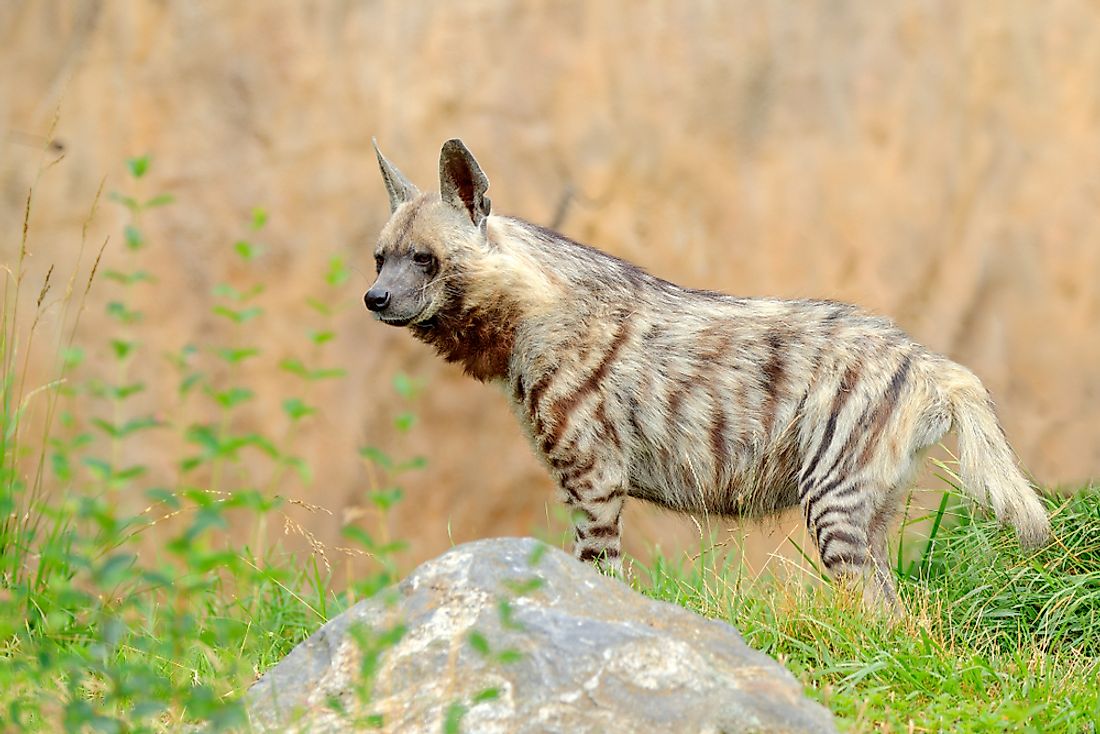
The striped hyena is native to East and North Africa, the Indian subcontinent, Central Asia, the Caucasus, and the Middle East. It is considered a Near Threatened species because the number of mature individuals is less than 10,000 and continues to decline. The stripped hyena is the smallest of the true hyenas. It is relatively bigger than the aardwolf. The forelimbs are significantly longer compared to the hind legs. The neck is long and thick preventing the animal from moving its head freely. These hyenas have a winter coat that is long and uniform and stretches from the occiput to the tip of the tail. It is primarily nocturnal typically leaving the den during total darkness and returning before sunset. They are not as social as the spotted hyenas with groups containing between two to seven animals. The striped hyena is a scavenger that feeds on carcasses regardless of the stage of decomposition. It also feeds on ligaments, fresh bones, bone marrow, and cartilages. Occasionally the hyena will attack and kill an animal it can overcome.
2. Spotted Hyena (Crocuta crocuta)
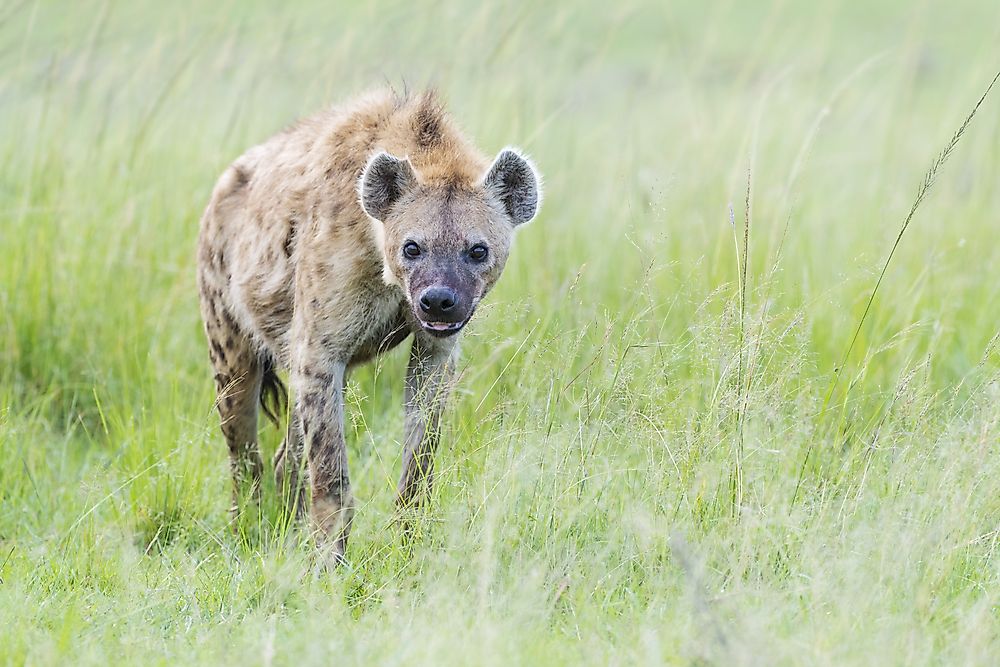
The spotted hyena is the most widespread of the hyenas and is classified as a species of Least Concern as between 30,000 and 50,000 individuals roam the wild. They are native to sub-Saharan Africa where they continue to thrive. It is the largest of the hyenas and easily distinguished from the other species by its bear like physique. It is the most social carnivore in that it lives in groups of about 30 members with complex social hierarchies. This hyena has a sturdy and well-built body but underdeveloped hindquarters. Its skull is much more prominent to that of the striped hyena, its jaws are powerful enough to crush bones and hold prey for a long time. The bite force of a spotted hyena outmatches that of the brown bear. The fur of the spotted hyena varies and change with age; it contains spots rather than stripes typical of the brown and stripped hyenas. It is the most defined scavenger in sub-Saharan Africa. When moving in a park, these animals are known to snatch kills from lions and leopards. Although these animals are scavengers, they kill 60% of their prey.
1. Brown Hyena (Hyaena brunnea)
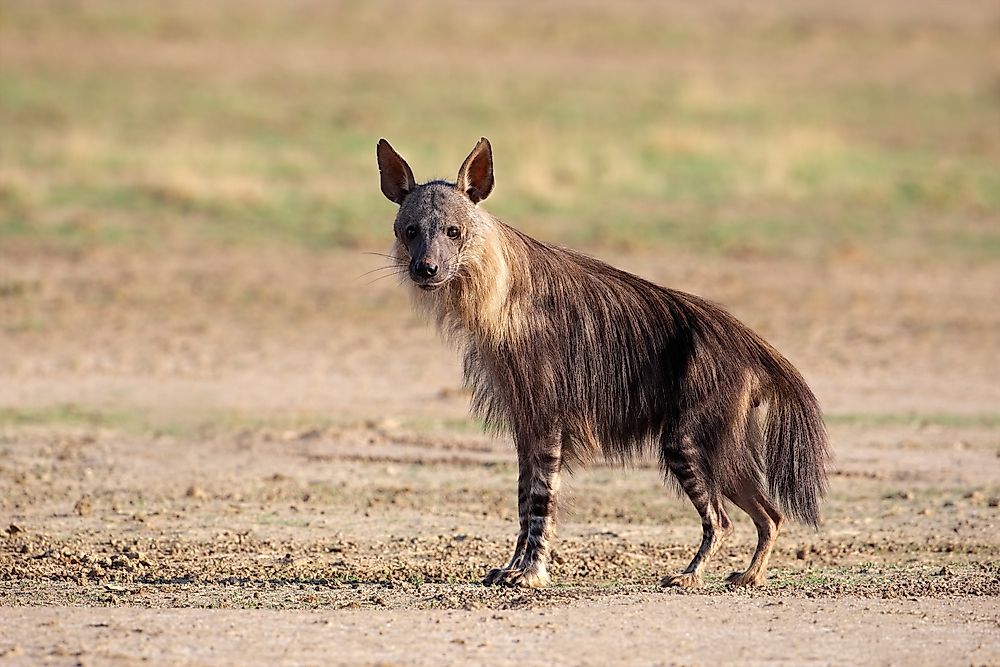
The brown hyena, also known as the strandwolf, is the rarest of the hyenas. It is found in Zimbabwe, South Africa, Mozambique, and Namibia. The largest remaining population of this hyena is found in the Kalahari Desert. It is mostly found in the desert and semi desert environment, and woodland savannas. In some rare cases, the brown hyena moves close to urban areas in search of food. It is distinguished from other hyenas by their pointed ears, short tail, and long dark brown shaggy coat. They have powerful jaws like those of the spotted hyena that can easily break bones. They are scavengers and their diet consist of leftover carcasses. However, they supplement the diet with eggs, insects, rodents, and small mammals.











